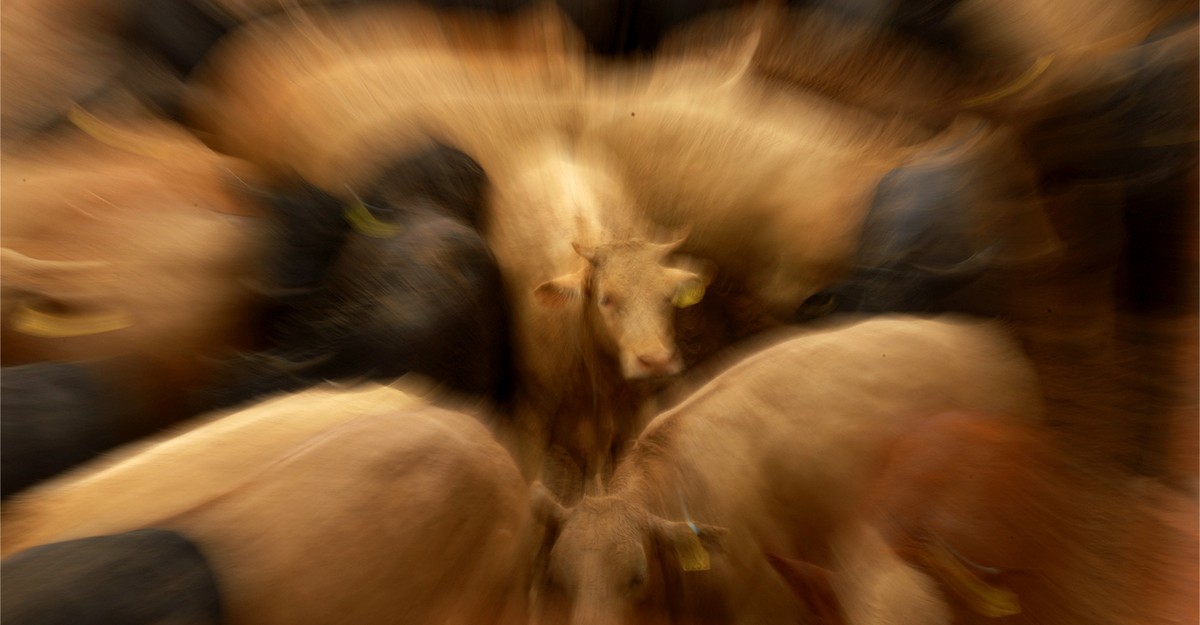Man-Eater Screwworm: Understanding The Risks And Prevention

Welcome to your ultimate source for breaking news, trending updates, and in-depth stories from around the world. Whether it's politics, technology, entertainment, sports, or lifestyle, we bring you real-time updates that keep you informed and ahead of the curve.
Our team works tirelessly to ensure you never miss a moment. From the latest developments in global events to the most talked-about topics on social media, our news platform is designed to deliver accurate and timely information, all in one place.
Stay in the know and join thousands of readers who trust us for reliable, up-to-date content. Explore our expertly curated articles and dive deeper into the stories that matter to you. Visit Best Website now and be part of the conversation. Don't miss out on the headlines that shape our world!
Table of Contents
Man-Eater Screwworm: Understanding the Risks and Prevention
The mere name evokes fear: the man-eater screwworm. While the term might sound sensationalized, the reality is that this parasitic fly, Cochliomyia hominivorax, poses a significant threat to livestock and, though rare, can also affect humans. Understanding the risks and implementing effective prevention strategies is crucial for protecting both animals and people.
What is a Screwworm?
Screwworms are the larvae (maggots) of a specific type of blow fly. Female screwworms deposit their eggs in open wounds, or even natural orifices, of warm-blooded animals. Once hatched, these maggots burrow into the flesh, feeding on living tissue and causing severe, often debilitating, wounds. This relentless feeding can lead to significant tissue damage, secondary infections, and even death if left untreated. The sheer destructive power of these maggots is what earns them the grim moniker "man-eater."
Risks to Humans and Animals:
While primarily a threat to livestock, particularly cattle, sheep, and goats, C. hominivorax can also affect humans. This usually occurs in areas where veterinary sanitation is poor or when individuals are exposed to infected animals. The risk is significantly higher in tropical and subtropical regions where the fly thrives.
- Livestock: The primary impact of screwworm infestations is on livestock production. Infestations can lead to significant economic losses due to animal mortality, reduced productivity, and the costs associated with treatment.
- Humans: Human infestations are less common but can be extremely painful and debilitating. Wounds can become severely infected, requiring extensive medical treatment. In extreme cases, untreated infestations can be fatal.
Prevention Strategies: A Multi-pronged Approach
Effective screwworm control requires a multifaceted approach that combines several strategies:
- Early Wound Care: Prompt and thorough cleaning of any open wounds on animals or humans is crucial. Keeping wounds clean and covered helps prevent screwworm infestations.
- Livestock Management: Proper livestock management practices play a significant role in prevention. This includes regular inspection of animals for wounds, prompt treatment of injuries, and maintaining a clean environment.
- Chemical Control: Insecticides can be used to control adult fly populations, but their effectiveness is limited and they can have environmental consequences.
- Sterile Insect Technique (SIT): This innovative technique involves releasing large numbers of sterile male screwworms into the environment. These sterile males mate with wild females, resulting in infertile eggs and a reduction in the fly population. SIT has proven highly effective in eradicating screwworms from certain areas. .
- Community Education and Awareness: Public awareness campaigns are crucial for educating communities about the risks and preventive measures. This includes promoting proper wound care, recognizing the signs of infestation, and reporting suspected cases.
Recognizing an Infestation:
Recognizing the signs of a screwworm infestation is critical for early intervention. Look for:
- Maggots: The presence of active, white, legless maggots in a wound is a clear indication of infestation.
- Inflammation: The affected area will be swollen, red, and painful.
- Discharge: There may be a significant amount of purulent discharge from the wound.
Seeking Medical Attention:
If you suspect a screwworm infestation in yourself or an animal, seek immediate veterinary or medical attention. Prompt treatment is essential to prevent severe complications.
Conclusion:
The man-eater screwworm remains a significant threat to livestock and can pose a risk to humans. Implementing comprehensive prevention strategies, including proper wound care, livestock management, and community awareness, is critical for minimizing the impact of these destructive parasites. Early detection and prompt treatment are also vital for preventing serious consequences. By understanding the risks and taking appropriate precautions, we can protect both animals and ourselves from the devastating effects of the screwworm.

Thank you for visiting our website, your trusted source for the latest updates and in-depth coverage on Man-Eater Screwworm: Understanding The Risks And Prevention. We're committed to keeping you informed with timely and accurate information to meet your curiosity and needs.
If you have any questions, suggestions, or feedback, we'd love to hear from you. Your insights are valuable to us and help us improve to serve you better. Feel free to reach out through our contact page.
Don't forget to bookmark our website and check back regularly for the latest headlines and trending topics. See you next time, and thank you for being part of our growing community!
Featured Posts
-
 French Open Schedule Novak Djokovics Matches And Daily Order Of Play
May 29, 2025
French Open Schedule Novak Djokovics Matches And Daily Order Of Play
May 29, 2025 -
 Trumps Anger At Putin Prompts Consideration Of Further Sanctions
May 29, 2025
Trumps Anger At Putin Prompts Consideration Of Further Sanctions
May 29, 2025 -
 Remembering Rick Derringer A Talented Musicians Legacy
May 29, 2025
Remembering Rick Derringer A Talented Musicians Legacy
May 29, 2025 -
 How A Questionable Warrant Helped Secure A Conviction In A Decades Old Rape Case Against An Arkansas Police Chief
May 29, 2025
How A Questionable Warrant Helped Secure A Conviction In A Decades Old Rape Case Against An Arkansas Police Chief
May 29, 2025 -
 Student Visa Delays Us Expands Social Media Checks For Applicants
May 29, 2025
Student Visa Delays Us Expands Social Media Checks For Applicants
May 29, 2025
Latest Posts
-
 Tsmc Q2 Profit Jumps 61 Exceeding Expectations Amidst Robust Ai Chip Demand
Jul 17, 2025
Tsmc Q2 Profit Jumps 61 Exceeding Expectations Amidst Robust Ai Chip Demand
Jul 17, 2025 -
 Nvidias Ai Chip Sales To China A Reversal Of Us Export Controls
Jul 17, 2025
Nvidias Ai Chip Sales To China A Reversal Of Us Export Controls
Jul 17, 2025 -
 Love Island Usas Amaya And Bryan Post Show Relationship Update
Jul 17, 2025
Love Island Usas Amaya And Bryan Post Show Relationship Update
Jul 17, 2025 -
 Ynw Melly Double Murder Case Retrial Set For September Following Mistrial
Jul 17, 2025
Ynw Melly Double Murder Case Retrial Set For September Following Mistrial
Jul 17, 2025 -
 De Chambeau Explains Why Public Courses Present Unexpected Challenges
Jul 17, 2025
De Chambeau Explains Why Public Courses Present Unexpected Challenges
Jul 17, 2025
